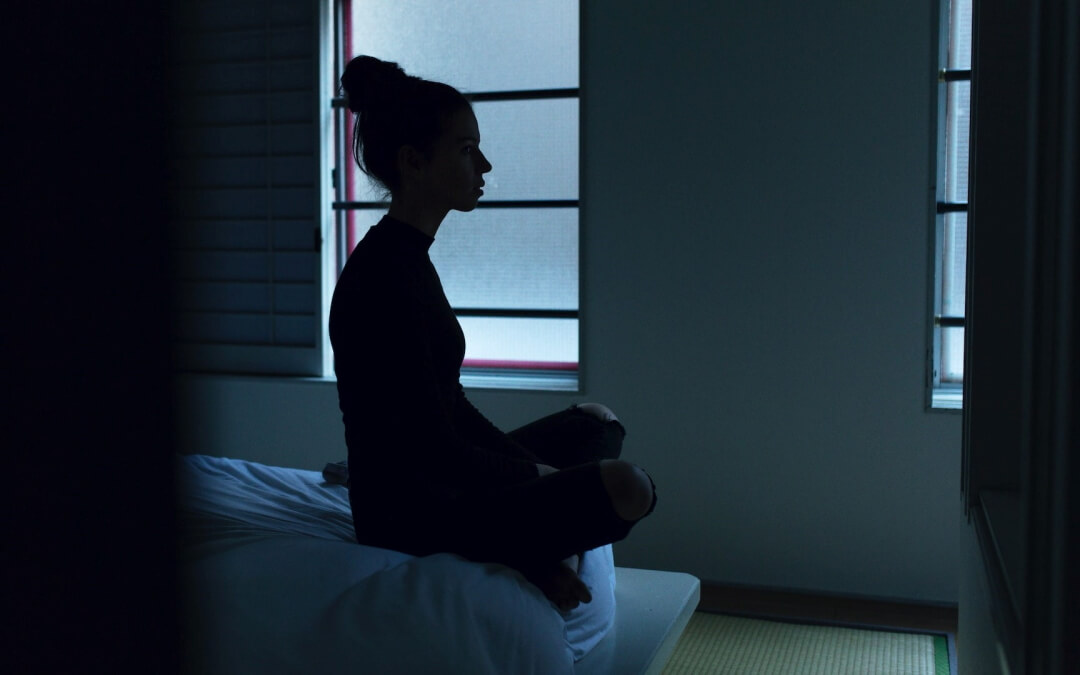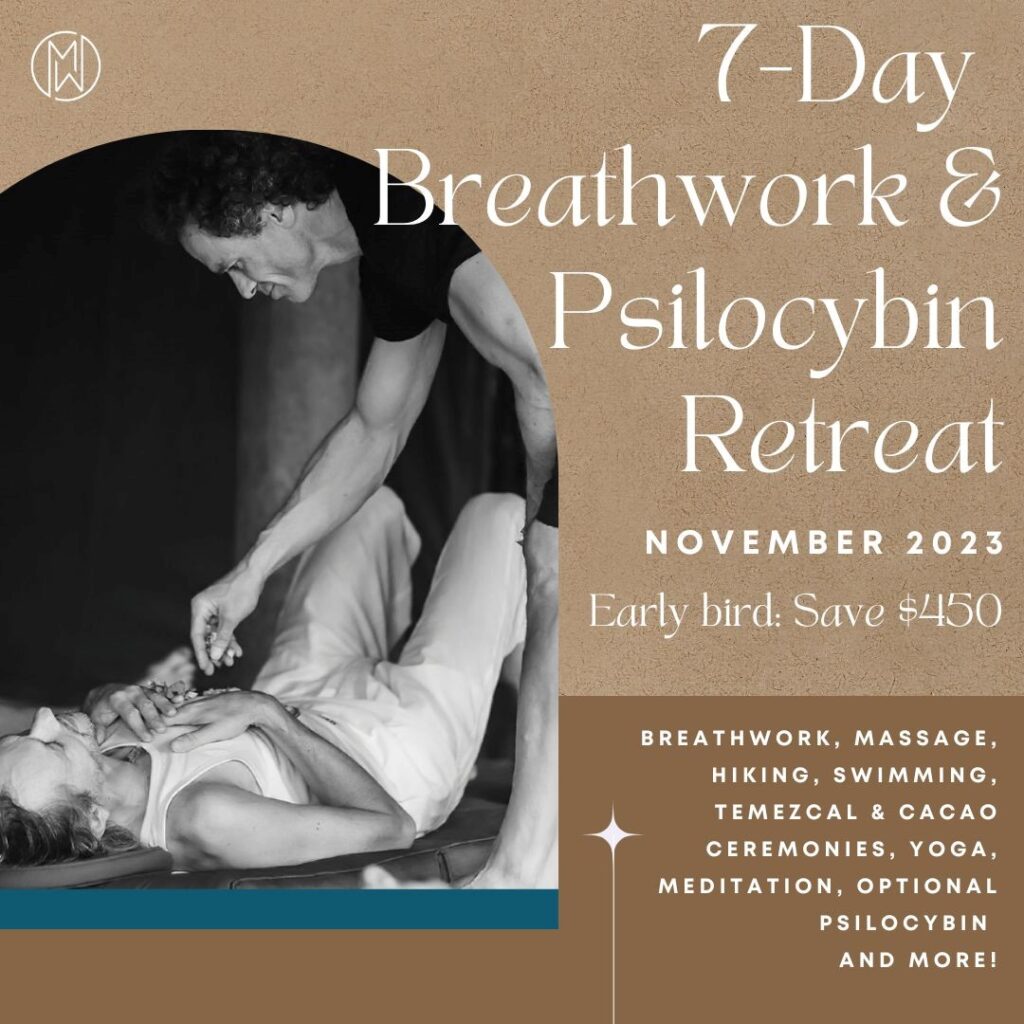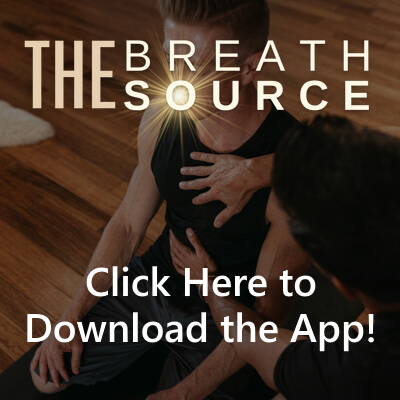First off, please know that I myself have lived every word of this advice and continue to use these same tools on my own journey towards mental and emotional health. Anxiety is unavoidable. It’s an emotion like any other. It’s meant to be experienced and learned from, before letting it pass.
So today, I ask you: What do you need to accept or let go of to move beyond your anxiety?
The Internal Process:
Anxiety stems from repressing your emotions and obsessing about your problems. The good news is 99% of your troubles exist in the past or the future – which means, so as long as you are embodied, living and breathing in the present moment your mind and body will be at ease!
Repressing our emotions makes us feel sad, lonely, frustrated, depressed and even crazy… feeling as though we’ll never escape the endless cycle of negative thoughts circulating in our minds. Ultimately, this rumination saps our energy and undermines our ability to live as fully and freely as we’d like. So, how do we break free?
Address Your Emotions: Understand this, your mind is ruled by your emotions. Thus, it’s only by addressing your feelings and the unwanted, “darker” aspects of yourself that you can resolve your anxiety. Anxious people know their mind is a problem, but rather than addressing their emotions they remain trapped beneath a blanket of self-induced expectations, regrets and fears – which keeps them from feeling whole, loved, secure, worthy and happy. It’s these unresolved feelings that feed their anxiety and keeps them from being their best selves.
Grow Your Awareness: We can all benefit from opening up and expressing ourselves so whether it’s with a trained professional or a best friend continue to share the truth about your struggles – but look for someone who won’t just reaffirm your current story! Invite a new perspective. Find someone who can shine a light into your blind spots. It’s by cultivating our personal awareness that we fertilize our minds and hearts for seeds of change to take root. Whether it’s by way of journaling, talk therapy, books or healing programs, it pays to start by asking the deeper question of what’s troubling us and why? It’s by identifying our patterns and behaviors that we can change our narrative. We must learn who we are to transcend our limitations and write a new story.
Accept Your Reality: Anxiety stems from our need to control and our desire for things to be different. We must learn to accept what IS, rather than being driven by the illusion of how we want things to be. Once we accept ourselves and the circumstances of our lives everything improves.
Take Responsibility: From awareness we progress to action. By letting go of the past and accepting responsibility for our own happiness we learn to care for ourselves with love, empathy, patience and kindness. Focusing on our self, rather than trying to change others, is the path to resolving our anxiety.
Self Assessment:
Where you are on the anxiety spectrum determines what do you need. Do you feel as though your cup is spilling over and you can’t contain your emotions? Or do you feel more secure and balanced than that? Your level of emotional resilience determines your path forward and only you know what you need.
Your choices are:
A) Use Functional Breathing Exercises to help manage your anxiety. In this scenario you’ll mildly stress your nervous system with activating breaths, or use gentle calming breaths slow, balance, rest and restore.
B) Do BREATHWORK to resolve your anxiety by over-stimulating your nervous system and pushing yourself yourself towards cathartic release.
To calm and balance, or activate to transcend, that is the question?
Managing vs Resolving:
There’s a difference between managing our emotions and resolving them. Tools for managing anxiety work to get us through, offering relief in our everyday lives. Applied consistently over time these tools can make a significant difference. Resolving anxiety however requires a bit more digging, cutting to the root of the issue. This is where we use deep breathing practices to unlock us from the inside out.
As discussed above, the journey starts by growing our awareness. From there we employ a body-based therapy to release stored negativity and align our minds toward positivity. We work through the body to free ourselves on an emotional level, because that’s where our emotions are stored! Breathwork, EMDR, Vipassana meditation and psychedelics are all ways of accessing and releasing memories and emotions stored in our bodies and our subconscious mind. This is the healing path.
Yogis believe that when you resolve one underlying emotion, you dissolve more than 10,000 thoughts, which is why we work on an emotional level to clean up the mind. Intellectualizing doesn’t free the body from entrenched feelings, which is why talk therapy can only take us so far. To heal, we need to silence the mind, feel what needs to be felt and integrate it, so we can move beyond it.
Coming to terms with our feelings isn’t easy and quite honestly, most people don’t have the stomach for it. Instead, they opt to manage their emotions forever rather than confronting the emotions and patterns that drive them. For those who wish to bravely step forward, you must A) believe change is possible, and B) accept that it might get worse before it gets better. Growing our personal awareness is often painful, but it’s a necessary step along the path to emotional and mental healing.
How To Face Our Anxiety:
How we face our anxiety matters. We must turn toward our fear rather than hiding from it – and the posture we take makes all the difference. Let me be clear about this, we do not fight our anxiety, we learn to dance with it! Our stance must be open and reflective rather than harsh and combative. We must learn to move like water rather than becoming reactive like fire.
Anxiety is the body’s way of speaking to us, warning us that something is amiss. If we shut our eyes and close our ears the warning only grows louder. So we need to open a dialogue with our anxiety and begin talking to it (internally, in the mind) as though it’s a valued part of us, because it is! Please realize, the very thing we most want to go away is trying to protect us. It’s here to help us and and once it feels heard, it will be free to leave us. Therefore, we have no choice but to listen. If we fail to listen and turn our backs on our anxiety, repressing our emotions in the process, our anxiety will turn to depression which is disgust, anger and shame turned inwards and everything will get even worse!
So, how do we dance with and speak to our anxiety? When we first feel ourselves tightening, constricting or buzzing with a heightened sense of tension we greet our anxiety with a warm “hello” and immediately bring our awareness to our breath and the sensations of our body. We do our best to lengthen and deepen our breath through the nose while relaxing the body. As we’re doing this we bring our conscious awareness to the bodily sensations we are feeling, rather than the emotions being aroused. Ignore the feelings and focus on the sensations!
Focus your awareness on the constriction in your chest, the heat in your face, your racing heart, your clenched jaw… watching these sensations the way you’d watch a thunderstorm passing overhead, without trying to control what’s happening. Simply watch and feel the sensations of your body without attaching to the emotions being provoked. Keep talking as the storm plays out, “Oh, you’re strong today my old friend. I can feel you in my chest,” – and keep breathing into the sensations you are feeling. Practice this method and you’ll come to notice that anxiety is the same energy as excitement, just with a negative projection.
By breathing with our anxiety we learn to soothe our nervous system and accept the unwanted aspects of ourselves we’ve pushed away. As we do this, our negative feelings and attachments loosen their grip on us and we begin to reclaim our personal power.
I’m fully aware that talking to your anxiety and the sensations in your body seems ridiculous – but it works! The absolute best way to train in this approach is to try it first thing in the morning as you’re waking up. For many of us, that first tinge of anxiety starts just as our eyes begin to flutter open. This is the time to turn your awareness inwards, focusing on the sensations of your body, begin deepening and lengthening your breath and silently speaking to your anxiety. By doing this you’ll mange the cortisol bump that often derails your entire day AND you’ll be training resilience into your nervous system. You’ll be training your body to know it’s safe and can handle stress, anxiety and emotions as they arise.
And if your anxiety doesn’t start that early, still do 3 minutes of deep, slow, paced breathing through the nose before leaving bed in the morning to begin the day in a balanced and centered state. Start at 4 seconds in, 4 seconds out and slow it down further from there, stretching each breath into your upper chest before gently relaxing each exhale. You want the breath to be smooth and you don’t want to stress the nervous system, so only slow the breath to a comfortable rate. 10-20 minutes of paced breathing in the morning will change your day.
Use The Breath:
Your breath is the fastest way to change your mental and emotional state. You can use it to wake up, calm down or balance your nervous system anytime and it works fast! If you take just one lesson from this article, remember this…
USE YOUR BREATH TO CALM YOUR BODY
ONCE YOU CALM YOUR BODY
YOUR MIND HAS NO CHOICE BUT TO FOLLOW
Slowing, lengthening and deepening the breath through the nose accesses sensors in our low lungs that send parasympathetic calming signals to our brains, activating our rest and digest system. Slow, paced, diaphragmatic breathing is how we self-soothe. It lowers adrenaline and cortisol while bringing vital oxygen to every cell in our bodies. It lowers heart rate and blood pressure, while raising our HRV, which is an indicator of how well we’re able to manage stress. Extended exhales are especially good at inducing a calm, parasympathetic state.
The paradox of breathing is that we can use activating breaths to clear energy quickly, temporarily amplifying our nervous system so we can clear our minds more easily and eventually descend into an even deeper state of relaxation. Both ways work, it’s simply a matter of honoring what you need at any given moment – and choosing a breath and protocol that works for you! You are the expert on you. Only you know what you need and the best breath for you is the one you’ll use!
Below you’ll find a list of powerful breath interventions you can use in 30 seconds to 5 minutes to change your mental, emotional and physiological state.
Slow Breathing Protocols for Anxiety
Coherence Breath into 7-11:
Anytime we’re breathing through our noses, slowing our inhale and exhale to a comfortable rate, we are working ourselves toward a parasympathetic state of relaxation. Start by finding your comfortable inhale and comfortable exhale, extending each in balance. Initiate the breath in the low belly, pulling it up high into the chest before letting it cascade back down. Start with a 3 in and 3 out pattern and grow it to 5 in 5 out, keeping the breath slow and steady. This is a balanced breath in a coherent pattern. Beyond delivering maximum oxygen to our brain and body, Coherence Breath reduces cortisol levels while increasing oxytocin, dopamine, serotonin and Alpha brain wave activity. Try it now seeing just how soft your body can become, how silent your breath can be and if you can find release and relaxation in every exhale? Inhale to 5, exhale to 5, gently stretching the breath into the upper chest before letting it flow back out.
From here we learn to slow our inhales and exhales even more. Can you stretch your inhale to the count of 7 seconds and let your exhale flow out to the count of 11 seconds? Extended exhales are a powerful tool for calming the nervous system, while lowering heart rate and blood pressure. At this point you’ll be slowing your breath to nearly 3 breaths per minute vs the 15-20 breaths per minute we typically breathe, slowing and inducing a state of calm. When you feel more saliva in your mouth you’ll know you’ve activated your body’s natural parasympathetic response, signaling you’ve entered “rest and digest mode.”
4-7-8 Breath into Sitali:
This is a powerful combination of breaths that will slightly stimulate the nervous system before inducing a deep state of tranquility. To perform 4-7-8 Breath inhale through your nose taking a deep breath to the count for 4, hold for 7 and then exhale forcefully through pursed lips to 8, or however long you can sustain a forceful exhale. (It’s ok if you fall shot of 8 to begin.) It doesn’t work if you exhale gently. Try to accelerate the breath towards the end of each exhale, creating a “Woosh” sound to finish as if you are blowing out a birthday candle from 3 feet away. Repeat this for 4-8 breath cycles without pause. It’ll take 1.5-3 minutes to complete. Perform 3x daily to reduce blood pressure.
When complete, switch to Sitali Breath. Start by rolling your tongue vertically (long-ways) while sticking it out of your mouth just a bit. Breathe in through your curled tongue feeling the cool air as it enters, lifting your chin slightly as the inhale slows to completion. Then exhale softly through the nose. Really work to extend the inhale and soften the exhale, just letting the air spill out naturally through the nose. Can you extend your inhale to 10, 15 or even 20 seconds, slowing down further and further as you go? Stacking these two breaths will tranquilize the mind when done properly.
To continue reading and receive the accompanying video series enter your email and download the full PDF here.





